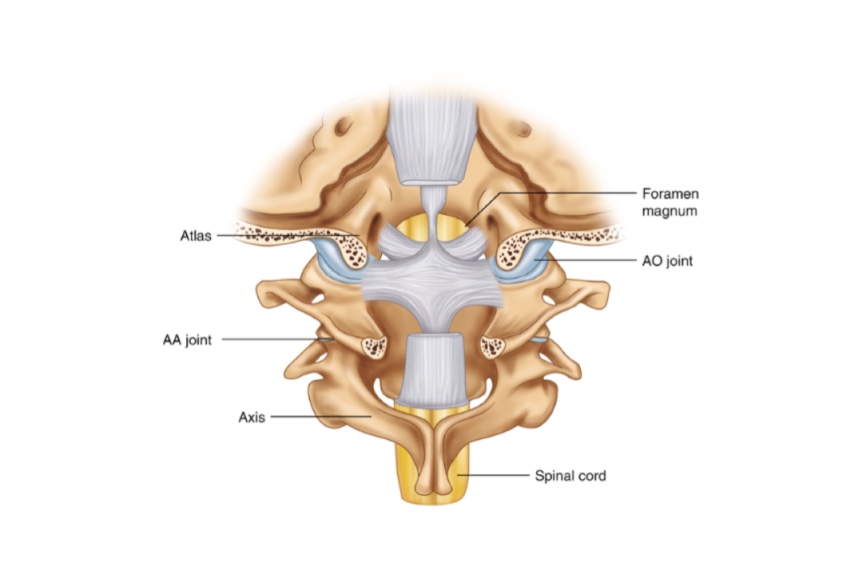
TEMPOROMANDIBULAR JOINT (JAW JOINT)
Q.1 What type of joint is a temporomandibular joint (TM joint)?
Condylar variety of synovial joint
Q.2 Name the ligaments of the T-M joint.
- Fibrous capsule,
- Articular disc,
- Lateral ligament,
- Sphenomandibular ligament and
- Stylomandibular ligament.
Q.3 What are the characteristic features of articular disc?
- It divides the joint into an upper and a lower compartment.
- It has a concavo-convex superior surface and a concave inferior surface.
- It has five parts:
– Anterior extension,
– Anterior band,
– Intermediate thin zone,
– Thick posterior band and
– Posterior bilaminar region.
Q.4 What is the developmental origin of sphenomandibular ligament?
It is a remnant of the dorsal (cephalic) end of Meckel’s cartilage.
Q.5 Name the structures piercing sphenomandibular ligament.
Mylohyoid nerve and vessels
Q.6 What is the nerve supply of the TM joint?
- Auriculotemporal nerve and
- Masseteric nerve.
Q.7 Name the muscles of T-M joint (Muscles of mastication).
- Masseter,
- Temporalis,
- Lateral pterygoid and
- Medial pterygoid
Q.8 What is the developmental origin of muscles of mastication?
Mesoderm of first branchial arch
Q.9 What are the structures passing between two heads of lateral pterygoid?
- Maxillary artery and
- Buccal branch of mandibular nerve.
Q.10 What are the movements of TM joints?
- Depression of jaw (opening of mouth)
- Elevation of jaw
- Protraction
- Retraction
- Rotatory movements (chewing)
Q.11 Describe movements which occur in chewing.
Head of one side of the mandible with articular disc
- Glides forwards.
- Rotates around a vertical axis passing immediately behind the head of the opposite side.
- Glides backward
- Rotates in the opposite direction as the head of the opposite side comes forward.
Q.12 What are the different muscles producing movements of the jaw joint?
Depression:
Lateral pterygoid of both sides with digastric, geniohyoid and mylohyoid
Elevation:
Masseter, temporalis, and medial pterygoid of both sides
Protraction:
Lateral and medial pterygoids with masseter
Retraction:
Posterior fibers of temporalis with digastric and geniohyoid
Chewing:
Medial and lateral pterygoids of each side acting alternately.
ATLANTO-OCCIPITAL JOINT
Q.1 What is the variety of Atlantooccipital joint?
Ellipsoid variety of synovial joint
Q.2 What are the articular surfaces of the Atlanto-occipital joint?
From above: Occipital condyles.
From below: Superior articular facets of the atlas vertebra.
Q.3 What are the movements, possible at this joint?
- Flexion,
- Extension and
- Lateral flexion.
ATLANTO-AXIAL JOINT
Q.1 What type of this joint is?
- Median atlanto-axial joint: Pivot synovial joint
- Lateral atlanto-axial joint: Plane synovial joint.
Q.2 Name the ligaments connecting atlas, axis, and occipital bones.
- Anterior longitudinal ligament
- Anterior atlanto-occipital membrane
- Posterior atlanto-occipital membrane
- Ligamentum flavum: Between atlas and axis
- Membrana tectoria: Upward extension of posterior longitudinal ligament.
- Ligaments connecting dens of axis with occipital bone.
Q.3 Name the ligaments connecting the dens of the axis with the occipital bone.
- Cruciate ligament
- Apical ligament of dens and
- Alar ligaments (left and right)
Q.4 Which movement takes place at atlanto-axial joint?
Side to side movement
Q.5 How the death in hanging occurs?
Due to dislocation of dens of axis following rupture of the transverse ligament of the atlas, which then crushes the spinal cord and medulla, i.e. vital centers

Comments (0)